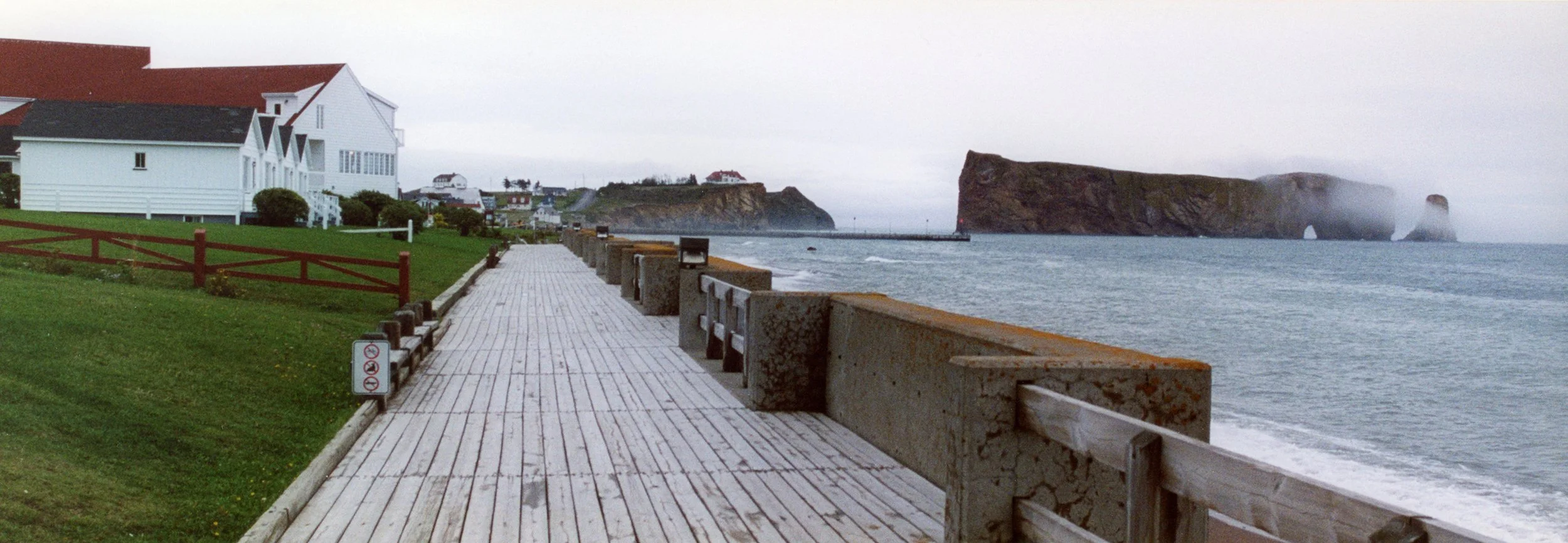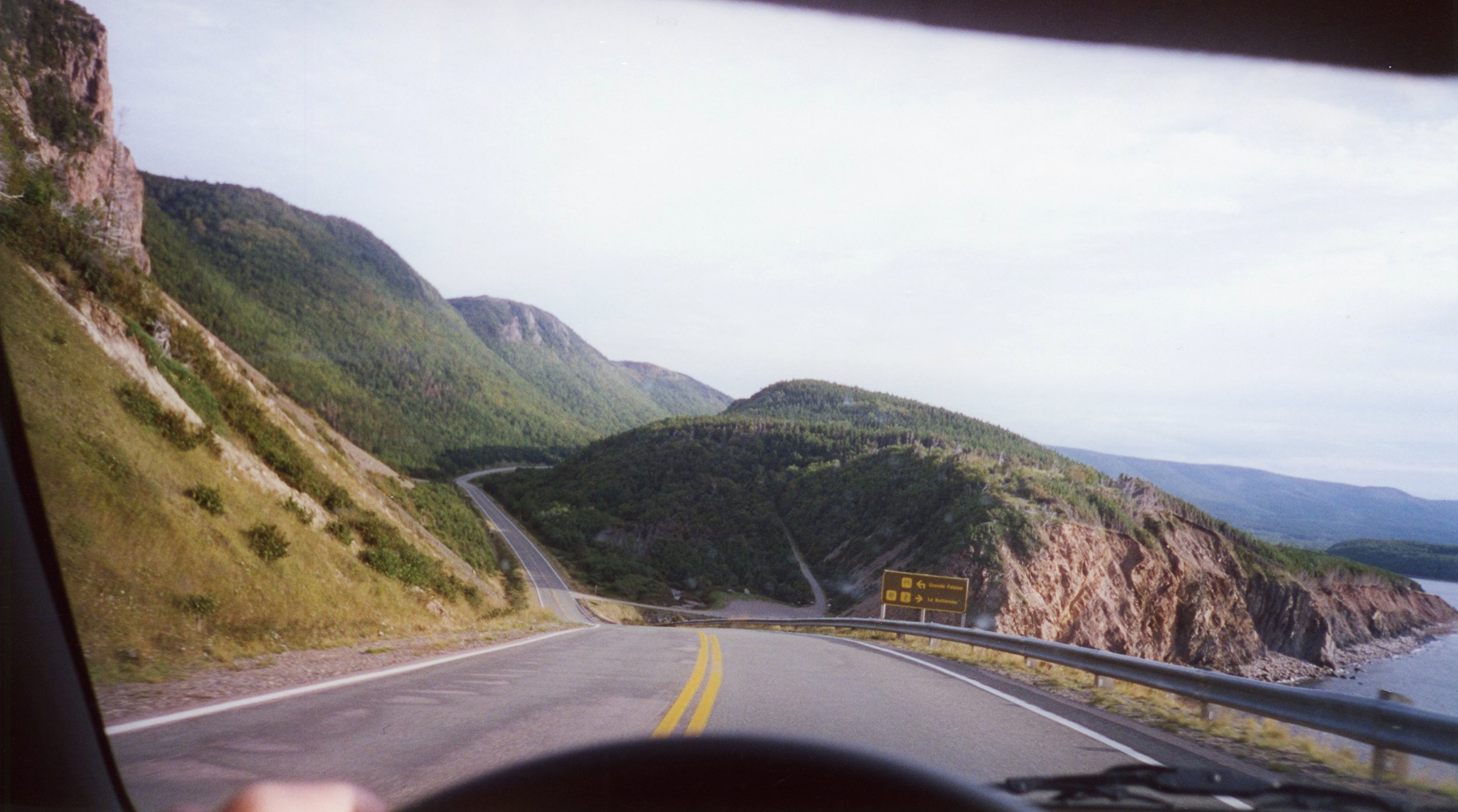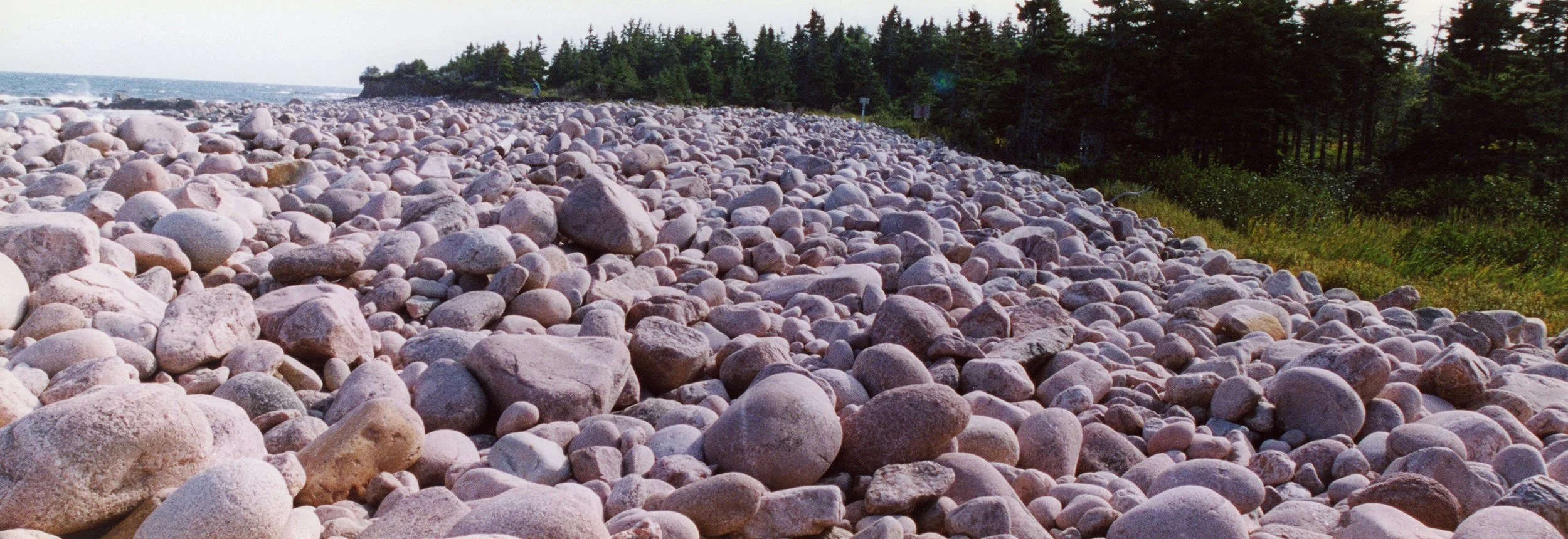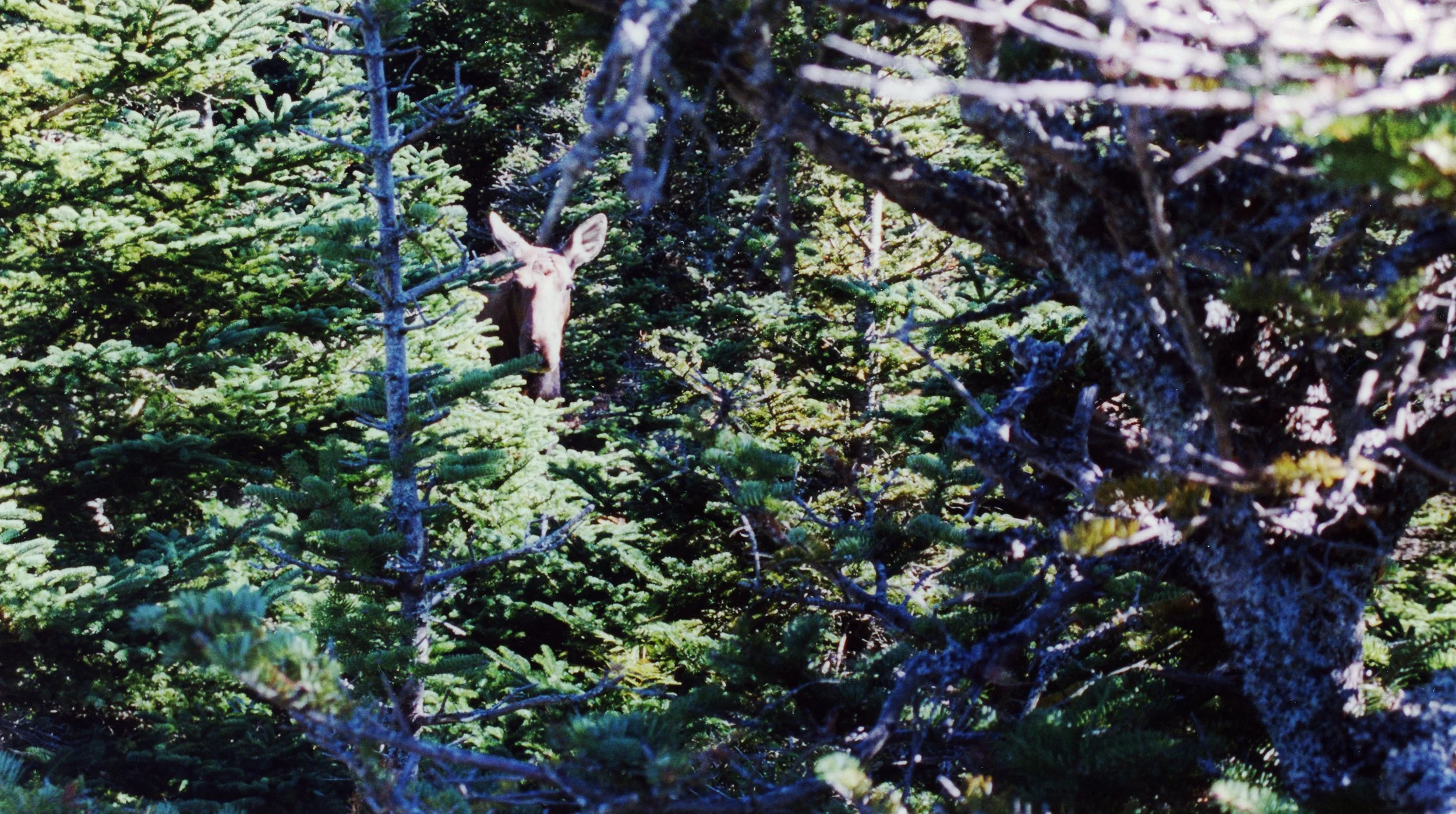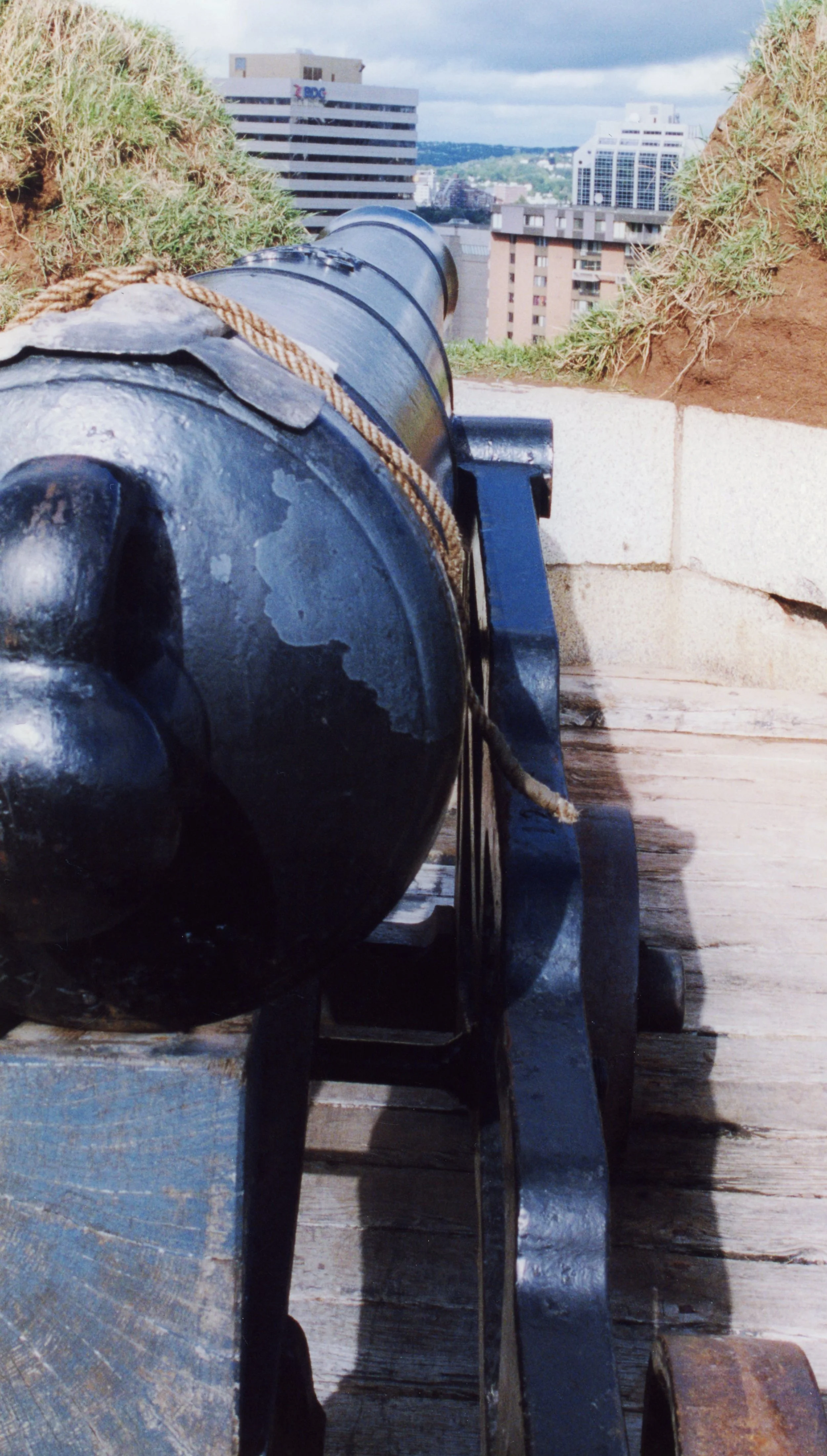
Page 2 of 3
Perce, Quebec, Canada
Come on baby, come on darling, let's just get into my car and drive
Back on the Gaspesie, just off the coast, just down the boardwalk from my hotel, the (locally) famous pierced rock at Perce commands attention away from the stormy sea. A quarter of a mile long and over 200 feet high with a little tiny hole in it, the rock remains not only the best but quite possibly the only reason to spend any time in this part of the Gaspesie.
A (possibly) interesting side note. While I enjoyed only one night in Perce, my faithless cell phone enjoyed a good week and a half there. After leaving Perce and driving nine hours into loyalist New Brunswick, I realized I had left it behind. Repeated attempts to secure its release and arrange a rendezvous with it before I completed my trip proved fruitless- a victim of language barriers, bad fax numbers and whatever passes for express mail in that isolated part of Quebec. While I have yet to receive it, there does remain promise it will find its way home soon, jaded from its adventure and constantly wondering why it has been forced back into heartless servitude after tasting and enjoying such sweet, sweet freedom.
Physically accessible at low tide yet emotionally accessible anytime, the big ass pierced rock playfully peeks behind the cliffs as it prepares yet again to be consumed by an all consuming dusk.
The (locally) famous Cabot Trail, advertised as one of the greatest drives in North America, does most certainly (at times) live up to its promise. Times when the abandoned ribbon of road stretches past your imagination to wrap around yet another nameless mountain, times when the proud Atlantic headlands feel (and are) close enough to touch, times when a flimsy guard rail feels like not nearly enough to save you from those headlands and, most notably, save you from yourself.
Cape Breton Island is the farthest northern piece of Nova Scotia, and Cape Breton Highlands National Park is at its most northern end, the point where after hours and hours and hours of driving, the coastline shifts from damn quaint to damn interesting. This is quite obviously taken from behind the wheel my unlucky rental car as I drive within (or close enough to) the legal limit of 80 km/h, listening to CBC Radio One or a local broadcast of my Ipod, as I do what I can to maintain speed, stay within my lane and avoid the perils of the headlands as I recklessly frame yet another picture of an abandoned ribbon of road wrapping around yet another nameless mountain.
Three or four miles from its uneventful start, the sometimes claustrophobic Coastal Trail opens up to yet another scaleless cobblestone beach, where hikers are expected to blindly navigate its field of unstable rocks- walking a fine, unbalanced line in the space between the jealous Atlantic and the sinking marshlands.
Across Maine, Quebec, New Brunswick and Nova Scotia, on well over 2200 miles of well traveled roads, obvious signs in at least two languages warned me of the presence and danger of moose lurking deep in the roadside wood. Despite these introduced fears, my car remained safe throughout those ten days of driving- my diligence and speed proved more than an even match against those wily antlered beasts.
All that changed the moment I was no longer safe in my car. Walking along the well traveled Skyline Trail in Cape Breton Highlands National Park, no more than ten feet away from all the action, two moose ate whatever it is that moose eat, ignoring those obvious signs warning all not to wander off the well traveled trail.
If you drove an hour south of Halifax along the coast, you would soon find yourself following all of the tour buses to the singular scenic destination of Peggy's Cove, one of the most popular places in all of Nova Scotia. Waiting for you there would be a lighthouse, a small scenic harbor town and, well, did I mention the lighthouse? It seems that the delightfully small Peggy's Cove is also painfully small, a place where a single bus of picture-happy visitors most definitely overwhelm the small scenic harbor town and recklessly steal all of its inherent peace.
Just over four years ago at the center point of the tilting horizon, a Swissair plane crashed into the cold, dark Atlantic, killing all on board. Four years later Swissair no longer exists and Peggy's Cove has returned to its scenic overcrowded self, with only a few well placed rocks left behind to remember such a tragedy and days best forgotten.
The claim that Halifax is the largest Canadian city east of Montreal needs to be understood in context. Quebec City is not especially large and everything else is small by comparison. There's nothing there other than quaint fishing villages, forests crawling with moose, and roads that taunt the occasional dramatic headland- all combining to provide the reason I was drawn to this part of Canada.
Halifax itself reminded me very much of a smaller Auckland, very pleasant but not necessarily inspiring. It had pleasant public gardens, a pleasant waterfront boardwalk, a pleasant main shopping street. It also had small, brutish pieces of civilization I was fortunate enough to enjoy, including a 24 hour Tim Horton's and an unexpected NHL exhibition game featuring the Ottawa Senators and Buffalo Sabres. They played their often good game on the home ice of the local Halifax Mooseheads, in an intimate arena just below Halifax's once powerful Citadel and within easy striking range of its well aimed cannons.


